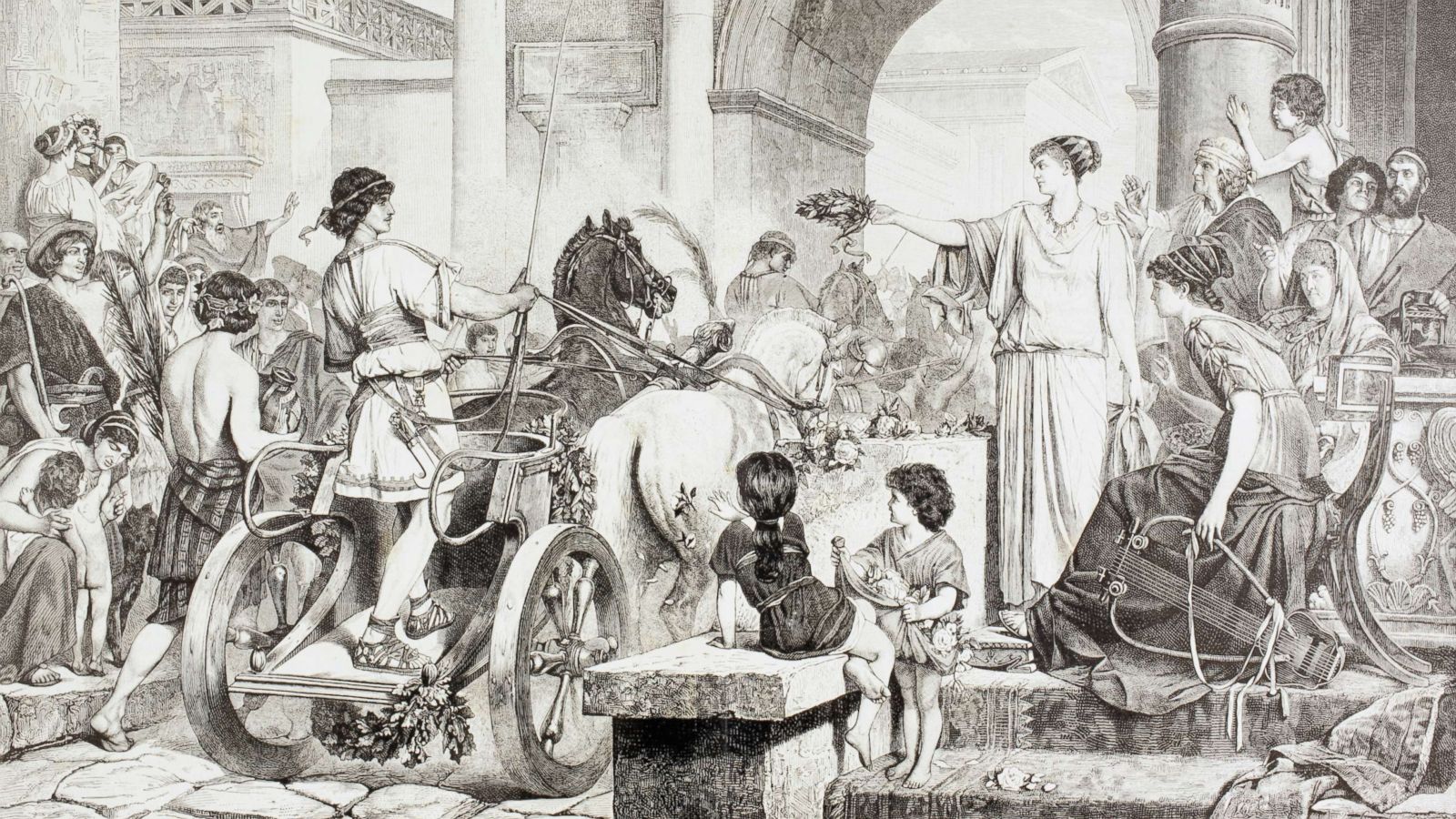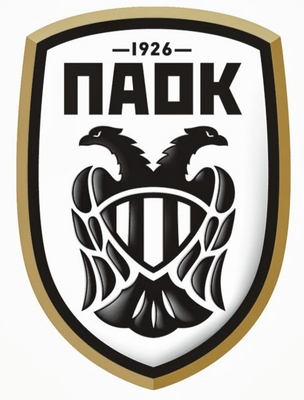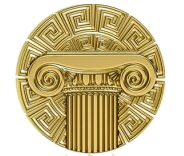
Deutsch-Chinesische Enzyklopädie, 德汉百科
 Greece
Greece

 Australia
Australia
 Belgium
Belgium
 Chile
Chile
 Denmark
Denmark
 Germany
Germany
 Estonia
Estonia
 Finland
Finland
 France
France
 Greece
Greece
 Ireland
Ireland
 Iceland
Iceland
 Israel
Israel
 Italy
Italy
 Japan
Japan
 Canada
Canada
 Luxembourg
Luxembourg
 Mexico
Mexico
 New Zealand
New Zealand
 Netherlands
Netherlands
 Norwegen
Norwegen
 OECD
OECD
 Emiel van Lennep
Emiel van Lennep
 OECD
OECD
 Don Johnston
Don Johnston
 OECD
OECD
 Jean-Claude Paye
Jean-Claude Paye
 OECD
OECD
 José Ángel Gurría
José Ángel Gurría
 OECD
OECD
 Staffan Sohlman
Staffan Sohlman
 OECD
OECD
 Thorkil Kristensen
Thorkil Kristensen
 Austria
Austria
 Poland
Poland
 Portugal
Portugal
 Republic of Korea
Republic of Korea
 Sweden
Sweden
 Switzerland
Switzerland
 Slovakia
Slovakia
 Slovenia
Slovenia
 Spain
Spain
 Czech Republic
Czech Republic
 Turkey
Turkey
 Hungary
Hungary
 United States
United States
 United Kingdom
United Kingdom

 Important International Organizations
Important International Organizations

経済協力開発機構(けいざいきょうりょくかいはつきこう)は、国際経済全般について協議することを目的とした国際機関。公用語の正式名称は、英語では"Organisation[1] for Economic Co-operation and Development"(イギリス英語表記)、フランス語では"Organisation de Coopération et de Développement Economiques"。略称は英語ではOECD、フランス語ではOCDE。
本部事務局はパリ16区の旧ラ・ミュエット宮殿に置かれている。事務総長はアンヘル・グリア。
The Organisation for Economic Co-operation and Development (OECD; French: Organisation de Coopération et de Développement Économiques, OCDE) is an intergovernmental economic organisation with 37 member countries,[1] founded in 1961 to stimulate economic progress and world trade. It is a forum of countries describing themselves as committed to democracy and the market economy, providing a platform to compare policy experiences, seek answers to common problems, identify good practices and coordinate domestic and international policies of its members. Generally, OECD members are high-income economies with a very high Human Development Index (HDI) and are regarded as developed countries. As of 2017, the OECD member countries collectively comprised 62.2% of global nominal GDP (US$49.6 trillion)[3] and 42.8% of global GDP (Int$54.2 trillion) at purchasing power parity.[4] The OECD is an official United Nations observer.[5]
In 1948, the OECD originated as the Organisation for European Economic Co-operation (OEEC),[6] led by Robert Marjolin of France, to help administer the Marshall Plan (which was rejected by the Soviet Union and its satellite states).[7] This would be achieved by allocating United States financial aid and implementing economic programs for the reconstruction of Europe after World War II. (Similar reconstruction aid was sent to the war-torn Republic of China and post-war Korea, but not under the name "Marshall Plan".)[8]
In 1961, the OEEC was reformed into the Organisation for Economic Co-operation and Development by the Convention on the Organisation for Economic Co-operation and Development and membership was extended to non-European states.[9][10] The OECD's headquarters are at the Château de la Muette in Paris, France.[11] The OECD is funded by contributions from member countries at varying rates and had a total budget of €386 million in 2019.[2]
Although OECD does not have a power to enforce its decisions, which further require unanimous vote from its members, it is recognized as highly influential publisher of mostly economic data through publications as well as annual evaluations and rankings of members countries.[12]
L'Organisation de coopération et de développement économiques (OCDE) est une organisation internationale d'études économiques, dont les pays membres — des pays développés pour la plupart — ont en commun un système de gouvernement démocratique et une économie de marché. Elle joue essentiellement un rôle d'assemblée consultative1.
L'OCDE a succédé à l'Organisation européenne de coopération économique (OECE) issue du plan Marshall et de la Conférence des Seize (Conférence de coopération économique européenne) qui a existé de 1948 à 1960. Son but était l'établissement d'une organisation permanente chargée en premier lieu d'assurer la mise en œuvre du programme de relèvement commun (le plan Marshall), et, en particulier, d'en superviser la répartition2.
En 2020, l'OCDE compte 37 pays membres et regroupe plusieurs centaines d'experts. Elle publie fréquemment des études économiques et sociales — analyses, prévisions et recommandations de politique économique — et des statistiques, principalement concernant ses pays membres.
Le siège de l'OCDE se situe à Paris (16e), au château de la Muette. L'organisation possède également des bureaux dans plusieurs autres métropoles, notamment à Berlin, Mexico, Tokyo et Washington.
L'Organizzazione per la cooperazione e lo sviluppo economico (OCSE) – in inglese Organization for Economic Co-operation and Development (OECD), e in francese Organisation de coopération et de développement économiques (OCDE) – è un'organizzazione internazionale di studi economici per i paesi membri, paesi sviluppati aventi in comune un'economia di mercato.
L'organizzazione svolge prevalentemente un ruolo di assemblea consultiva che consente un'occasione di confronto delle esperienze politiche, per la risoluzione dei problemi comuni, l'identificazione di pratiche commerciali e il coordinamento delle politiche locali e internazionali dei paesi membri[1]. Ha sede a Parigi nello Château de la Muette[2].
Gli ultimi paesi ad aver aderito all'OCSE sono la Colombia (28 aprile 2020),la Lettonia (1º luglio 2016) e la Lituania (5 luglio 2018), per un totale di 36 paesi membri.
La Organización para la Cooperación y el Desarrollo Económico1 (OCDE) es un organismo de cooperación internacional, compuesto por 37 estados,34 cuyo objetivo es coordinar sus políticas económicas y sociales. La OCDE fue fundada en 1961 y su sede central se encuentra en el Château de la Muette en París (Francia). Los idiomas oficiales de la entidad son el francés y el inglés.2
En la OCDE, los representantes de los países miembros se reúnen para intercambiar información y armonizar políticas con el objetivo de maximizar su crecimiento económico y colaborar a su desarrollo y al de los países no miembros.
Conocida como «club de los países ricos»,56 a partir de 2017, sus países miembros comprendieron colectivamente el 62,2 % del PIB nominal global (US$49,6 billones) y el 42,8 % del PIB global (Int US$54,2 billones).7
Организа́ция экономи́ческого сотру́дничества и разви́тия (сокр. ОЭСР, англ. Organisation for Economic Co-operation and Development, OECD) — международная экономическая организация развитых стран, признающих принципы представительной демократии и свободной рыночной экономики.
Создана в 1948 году под названием Организа́ция европе́йского экономи́ческого сотру́дничества (англ. Organisation for European Economic Co-operation, OEEC) для координации проектов экономической реконструкции Европы в рамках плана Маршалла.
Штаб-квартира организации располагается в Шато де ла Мюетт, в Париже. Генеральный секретарь (с 2006 года) — Хосе Анхель Гурриа Тревиньо (Мексика). Руководящим органом ОЭСР является совет представителей стран — членов организации. Все решения в нём принимаются на основе консенсуса.
По данным на 2011 год, в странах ОЭСР проживало 18 % населения мира[2].


泛希腊运动会是古希腊举行的四场运动会的合称。四场运动会中最古老的是奥林匹克运动会,最早举办于公元前776年。泛希腊运动会的举行十分规律,是希腊人计算时间的方法之一。运动员来自希腊各地,甚至包括从小亚细亚到西班牙的古希腊殖民地,非希腊人和女性不允许参赛。主要赛事有战车赛、摔跤、拳击、五项全能等。比赛胜利者的唯一奖品是一个花冠,没有其他任何金钱或实物奖励。[1] 但赢得比赛者会为其城邦赢得荣誉。
Die Panhellenischen Spiele (griechisch πανελλήνιοι ἀγῶνες maskulin Plural) waren gesamtgriechische Wettkämpfe zu Ehren der griechischen Götter, die an religiösen Kultstätten abgehalten wurden. Ursprünglich handelte es sich um Wettkämpfe unter Kriegern in voller Kriegsmontur. Später wurde mit Ausnahme des Waffenlaufs die Rüstung abgelegt und die Kämpfer traten nackt an. Im Rahmen der religiös-sportlichen Veranstaltung wurden auch kulturelle Wettkämpfe im Dichten und Musizieren ausgetragen.
Zu den panhellenischen Spielen werden die überregionalen Wettkämpfe an vier Kultstätten gezählt: Olympia, Delphi, Korinth und Nemea. Die Sieger aus diesen Wettkämpfen erhielten jeweils ortsspezifische Kränze, Zweige oder Stängel. Der Austragungsmodus dieser Spiele fand meist im Vierjahres-, seltener auch im Zweijahresrhythmus statt. Dieser Rhythmus wurde Periodos (Umlauf, Wiederkehr) genannt. Ein Wettkämpfer, der während einer Olympiade (Vierjahreszyklus) in einer Sportart in allen vier Hauptkampfstätten siegte, erhielt den Titel Periodonike.
"Panhellenic Games" is the collective term for four separate sports festivals held in ancient Greece. The four Games were:
The Olympiad was one of the ways the Greeks measured time. The Olympic Games were used as a starting point, year one of the cycle; the Nemean and Isthmian Games were both held (in different months) in year two, followed by the Pythian Games in year three, and then the Nemean and Isthmian Games again in year four. The cycle then repeated itself with the Olympic Games. They were structured this way so that individual athletes could participate in all of the games.
(But note that the dial on the Antikythera mechanism – [1] – seems to show that the Nemean and Isthmian Games did not occur in the same years.)
Participants could come from all over the Greek world, including the various Greek colonies from Asia Minor to Spain. However, participants probably had to be fairly wealthy in order to pay for training, transportation, lodging, and other expenses. Neither women nor non-Greeks were allowed to participate, except for very occasional later exceptions, such as the Roman emperor Nero.
The main events at each of the games were chariot racing, wrestling, boxing, pankration, stadion and various other foot races, and the pentathlon (made up of wrestling, stadion, long jump, javelin throw, and discus throw). Except for the chariot race, all the events were performed nude.
The Olympic Games were the oldest of the four, said to have begun in 776 BC. It is more likely though that they were founded sometime in the late 7th century BC. They lasted until the Roman Emperor Theodosius, a Christian, abolished them as heathen in AD 393. The Pythian, Nemean and Isthmian games most likely began sometime in the first or second quarter of the 6th century BC. The Isthmian games were held at the temple to Poseidon on the Isthmus of Corinth.
The games are also known as the stephanitic games, because winners received only a garland for victory. (Stephanitic derives from stephanos the Attic Greek word for crown.) No financial or material prizes were awarded, unlike at other ancient Greek athletic or artistic contests, such as the Panathenaic Games, at which winners were awarded many amphorae of first-class Athenian olive-oil. The Olympic games awarded a garland of olives; the Pythian games, a garland of laurel, i.e. bay leaves; the Nemean games, a crown of wild celery, and the Isthmian, a garland of pine leaves in the archaic period, one of dried celery in the Classical and Hellenistic periods, and again one of pine from then on.[1] Though victors received no material awards at the games, they were often showered with gifts and honors on returning to their polis.
Les Jeux panhelléniques sont des fêtes à caractère religieux célébrées en Grèce antique en l'honneur des dieux, auxquels on participait de toutes les régions de Grèce. Ce sont à l'origine des concours athlétiques réservés à l'aristocratie, dont les familles disposaient d'assez de temps et d'argent pour s'entraîner de façon prolongée, et qui attachaient une importance primordiale aux prouesses athlétiques1 ; par la suite, ces compétitions cessèrent d'être l'apanage exclusif de la noblesse, et des jeunes gens issus de la bourgeoisie y remportèrent aussi des victoires ; à partir du Ve siècle av. J.-C., d'autres disciplines culturelles se sont ajoutées aux épreuves athlétiques, puis les athlètes devinrent des professionnels.
I Giochi Panellenici ("di tutti i greci") erano competizioni sportive a carattere sacro che impegnavano tutte le città dell'Ellade (Grecia); una di esse, i Giochi Olimpici, ha dato ispirazione ai giochi olimpici moderni.
Giochi Panellenici è un termine collettivo con cui si indicano quattro diverse manifestazioni sportive che si tenevano nell'antica Grecia. I quattro eventi erano:
- I Giochi olimpici - i giochi più importanti e prestigiosi, si tenevano ogni quattro anni ad Olimpia nell'Elide ed erano dedicati a Zeus.
- I Giochi pitici - si tenevano ogni quattro anni nei pressi di Delfi ed erano dedicati ad Apollo.
- I Giochi nemei - si tenevano ogni due anni a Nemea ed erano anch'essi dedicati a Zeus.
- I Giochi istmici - si tenevano ogni due anni nei pressi di Corinto ed erano dedicati a Poseidone.
I giochi venivano organizzati seguendo un ciclo di quattro anni, noto come Olimpiade, che era uno dei modi in cui gli antichi Greci misuravano il tempo. I Giochi Olimpici venivano presi come punto di partenza, ovvero rappresentavano il primo anno del ciclo; nel secondo anno si tenevano sia i Giochi Nemei che i Giochi Istmici (in mesi diversi), seguiti dai Giochi Pitici nel terzo anno e da una nuova edizione dei Nemei e Istmici nel quarto. A quel punto il ciclo ricominciava con la disputa dei Giochi Olimpici. Erano organizzati in questo modo affinché gli atleti potessero partecipare a tutti i giochi.
Nel 262 a.C. vennero aggiunti i giochi tolemaici a seguito della guerra cremonidea in funzione anti-macedone; questi giochi si tenevano ogni quattro anni ad Alessandria ed erano dedicati a Tolomeo Sotere e Berenice I.[1]
Juegos Panhelénicos es el término que recibe el conjunto de cuatro contiendas diferentes que eran celebradas en la antigua Grecia. Estos cuatro juegos eran los Juegos Olímpicos, los Juegos Píticos, los Juegos Nemeos y los Juegos Ístmicos.
Los Juegos Olímpicos eran los más importantes y prestigiosos, celebrados cada cuatro años cerca de Elis, en honor a Zeus. Los Juegos Píticos también eran celebrados cada cuatro años cerca de Delfos, en honor a Apolo. Los Juegos Nemeos, cada dos años, se celebraban en honor a Zeus en Nemea, aunque en determinadas épocas pasaron a ser realizados en Argos. Los Juegos Ístmicos, en honor a Poseidón, se celebraban en Corinto cada cuatro años.
Los Juegos eran celebrados cada ciclo de cuatro años conocido como Olimpiada, que era una de las medidas de tiempo de la antigua Grecia. En este ciclo, los primeros en celebrarse eran los Juegos Olímpicos que se efectuaban en el primer año; durante el segundo año se celebraban los Juegos Nemeos y los Juegos Ístmicos (en meses diferentes); durante el tercer año acontecían los Juegos Píticos; y en el cuarto año eran nuevamente celebrados los Juegos Nemeos y los Juegos Ístmicos. Después el ciclo se volvía a repetir comenzando nuevamente con los Juegos Olímpicos. Así, los Juegos estaban organizados de forma que un atleta pudiese participar en todos ellos.
Los participantes podían proceder de todo el mundo griego, incluyendo las colonias griegas que se extendían desde Anatolia hasta el Mediterráneo occidental. Sin embargo, los participantes probablemente tenían que ser bastante ricos para poder pagar el entrenamiento, el transporte, el alojamiento y otros costos. Además, no se permitía la participación a las mujeres ni a los no griegos excepto en excepciones muy ocasionales, como con Nerón.
Los principales acontecimientos de cada uno de los juegos fueron las carreras de carros, la lucha olímpica, el boxeo, el pancracio, el stadion junto a otras carreras a pie, y el pentatlón (compuesto por la lucha, el stadion, el salto de longitud, el lanzamiento de jabalina y el lanzamiento de disco). A excepción de las carreras de carros, en el resto de acontecimientos los participantes iban desnudos.
La historia escrita de los Juegos Olímpicos se remonta al 776 a. C., pero realmente se fundó varios siglos antes.[cita requerida] Los otros tres juegos se fundaron en el siglo VI a. C.
Панэллинские игры — общенациональные празднества (греч. πανήγυριν[1], ср. панегирик) в Древней Греции[2], устраивавшиеся в честь богов. Они возникли как спортивные состязания, к которым впоследствии добавились и другие дисциплины.
Первоначально панэллинские игры состояли из следующих этапов, так называемых «периодов»:
- Олимпийские игры — наиболее значимые соревнования, проводившиеся один раз в четыре года в Олимпии в честь бога Зевса. Победители-олимпионики награждались венками из веток оливкового дерева[3].
- Пифийские игры — проводились один раз в четыре года в Дельфах в честь бога Аполлона. Победители награждались лавровыми венками, так как лавр считался священным деревом Аполлона[4].
- Истмийские игры — проводились один раз в два года вблизи Коринфа и посвящались богу Посейдону. Победителям вручали пальмовую ветвь и венок, который в древнейшее и в императорское время плелся из сосновых ветвей, а в классическую эпоху — из сельдерея[5].
- Немейские игры — проводились один раз в два года близ Немеи в честь бога Зевса. Наградой для победителей служили венки из веток оливы или из сельдерея[6].
Атлеты, победившие во всех четырёх панэллинских играх, получали почётный титул периодоника[2].
В эпоху эллинизма панэллинскими играми стали также называть состязания не общегреческого, а местного значения[2].


帕提农神庙(古希腊文:Παρθενών),是古希腊雅典娜女神的神庙,兴建于公元前5世纪的雅典卫城。它是现存至今最重要的古典希腊时代建筑物,一般被认为是多立克柱式发展的顶端;雕像装饰是古希腊艺术的顶点,此外还被尊为古希腊与雅典民主制度的象征,是举世闻名的文化遗产之一。近两个世纪以来,希腊持续进行对该神庙的修复与重建工作。[3]
现存的帕提农神庙是兴建来取代另一座旧帕提农神庙的(公元前480年为波斯人入侵所毁坏),就像大部分的希腊神庙,帕提农也用做金库的用途,有一阵子是提洛同盟(后来演变成雅典帝国)的金库,公元6世纪,帕提农被改用作纪念处女的天主教教堂(原来供奉的雅典娜也是处女)。在1460年代早期,被奥斯曼土耳其人征服后,它又被用作清真寺。1687年9月28日神庙被土耳其军当火药库,堆积的火药不幸被威尼斯军队炮击中,引发的爆炸严重损毁了庙体还有雕刻。1806年,英国的汤玛斯·布鲁斯,第七代额尔金伯爵在奥斯曼帝国的同意下,把部份保存下来的雕像移走,这些雕像也就是现在一般所知在1816年卖给伦敦大英博物馆的帕提农大理石,现在还展示在那里。希腊政府要求归还大理石的运动多年一直没有成功。
帕提农神庙是古希腊文明的重要史迹之一,对于研究古希腊的历史、建筑、雕塑、宗教等都具有极其重要的价值。
Der Parthenon (griechisch παρθενών „Jungfrauengemach“) ist der Tempel für die Stadtgöttin Pallas Athena Parthenos auf der Athener Akropolis.
Er wurde zum Dank für die Rettung der Athener und Griechen durch die Göttin nach dem letzten Perserkrieg als dorischer Peripteros erbaut. Im Laufe der Geschichte Griechenlands diente das Gebäude unter anderem auch als Schatzkammer des Attischen Seebunds. Der Parthenon ist eines der berühmtesten noch existierenden Baudenkmäler des antiken Griechenlands und eines der bekanntesten Gebäude weltweit. Das Gebäude beherrscht als zentraler Bau seit fast 2.500 Jahren die Athener Akropolis.
Der Parthenon ersetzte einen älteren Tempel der Athena, den sogenannten Vorparthenon, der während der persischen Eroberung Athens im Jahr 480 v. Chr. zerstört worden war. Im 6. Jahrhundert wurde der Tempel in eine Kirche umgewandelt, die der Jungfrau Maria geweiht war. Unter den Osmanen zur Moschee umgestaltet, beherbergte der Parthenon im Krieg gegen Venedig ein Munitionslager. 1687 wurde dieses von einer Kugel getroffen, wodurch es explodierte und den Tempel stark beschädigte. Umfangreiche Teile seiner Baudekoration wurden 1801 von Lord Elgin entfernt und nach London gebracht. Der Streit über die Rückgabe dieser sogenannten Elgin Marbles hält bis heute an.
パルテノン神殿(パルテノンしんでん、希: Παρθενών, ローマ字: Parthenon)は、古代ギリシア時代にアテナイのアクロポリスの上に建設された、アテナイの守護神であるギリシア神話の女神アテーナーを祀る神殿(en)。紀元前447年に建設が始まり、紀元前438年に完工、装飾等は紀元前431年まで行われた。パルテノン神殿はギリシア古代(en)建築を現代に伝える最も重要な、ドーリア式建造物の最高峰と見なされる。装飾彫刻もギリシア美術の傑作である。この神殿は古代ギリシアそして民主政アテナイ(en)の象徴であり、世界的な文化遺産として世界遺産に認定されている。
神殿は完全な新築ではなく、この地には古パルテノン(en)と呼ばれるアテーナーの神殿があったが、紀元前480年のペルシア戦争にて破壊された後に再建され、当時あった多くの神殿と同様にデロス同盟、そして後のアテナイ帝国の国庫として使われた。6世紀にはパルテノン神殿はキリスト教に取り込まれ、生神女マリヤ聖堂となった。オスマン帝国の占領(en)後の1460年代初頭にはモスクへと変えられ、神殿内にはミナレットが設けられた。1687年9月26日、オスマン帝国によって火薬庫として使われていた神殿はヴェネツィア共和国の攻撃によって爆発炎上し、神殿建築や彫刻などはひどい損傷を受けた。1806年、オスマン帝国の了承を得たエルギン伯(en)は、神殿から焼け残った彫刻類を取り外して持ち去った。これらは1816年にロンドンの大英博物館に売却され、現在でもエルギン・マーブルまたはパルテノン・マーブルの名で展示されている。ギリシア政府はこれら彫刻の返却を求めているが、実現には至っていない[1]。ギリシア文化・観光庁(en)は、パルテノン神殿の部分的な破壊の修復や保全など、後世に伝えるための再建計画を実行している。
パルテノン神殿のある丘の下の方は、世界ラリー選手権(WRC)の一戦、アクロポリス・ラリーのスタート地点としても有名である。
The Parthenon (/ˈpɑːrθəˌnɒn, -nən/; Ancient Greek: Παρθενών; Greek: Παρθενώνας, Parthenónas) is a former temple[4][5] on the Athenian Acropolis, Greece, dedicated to the goddess Athena, whom the people of Athens considered their patron. Construction began in 447 BC when the Athenian Empire was at the peak of its power. It was completed in 438 BC, although decoration of the building continued until 432 BC. It is the most important surviving building of Classical Greece, generally considered the zenith of the Doric order. Its decorative sculptures are considered some of the high points of Greek art. The Parthenon is regarded as an enduring symbol of Ancient Greece, Athenian democracy and Western civilization,[6] and one of the world's greatest cultural monuments. To the Athenians who built it, the Parthenon and other Periclean monuments of the Acropolis were seen fundamentally as a celebration of Hellenic victory over the Persian invaders and as a thanksgiving to the gods for that victory.[7] As of 2007 the Greek Ministry of Culture was carrying out a programme of selective restoration and reconstruction to ensure the stability of the partially ruined structure.[8]
The Parthenon itself replaced an older temple of Athena, which historians call the Pre-Parthenon or Older Parthenon, that was destroyed in the Persian invasion of 480 BC. The temple is archaeoastronomically aligned to the Hyades.[9] Like most Greek temples, the Parthenon served a practical purpose as the city treasury.[10][11] For a time, it served as the treasury of the Delian League, which later became the Athenian Empire. In the final decade of the sixth century AD, the Parthenon was converted into a Christian church dedicated to the Virgin Mary.
After the Ottoman conquest, it was turned into a mosque in the early 1460s. On 26 September 1687, an Ottoman ammunition dump inside the building was ignited by Venetian bombardment. The resulting explosion severely damaged the Parthenon and its sculptures. From 1800 to 1803,[12] Thomas Bruce, 7th Earl of Elgin removed some of the surviving sculptures with the alleged permission of the Ottoman Empire.[citation needed] These sculptures, now known as the Elgin Marbles or the Parthenon Marbles, were sold in 1816 to the British Museum in London, where they are now displayed. Since 1983 (on the initiative of Culture Minister Melina Mercouri), the Greek government has been committed to the return of the sculptures to Greece.[13]
Le Parthénon — grec ancien : Ὁ Παρθενών / Parthenṓn (à l'origine génitif pluriel de παρθένος, nom féminin, « jeune fille, vierge »), littéralement « la “salle” ou la “demeure” des vierges1 », — est un ancien temple,2,3 situé sur l'Acropole d'Athènes, dédié à la déesse Athéna, que les Athéniens considéraient comme la patronne de leur cité.
Réalisé entièrement en marbre pentélique, le Parthénon est à la fois un temple et un trésor, au sens antique du terme4. Le naos du Parthénon fut conçu pour abriter la statue chryséléphantine de la déesse Athéna Parthénos, œuvre monumentale de Phidias, à laquelle les Athéniens présentaient leurs offrandes. Si le culte rendu à la déesse avait habituellement lieu dans l'ancien temple d'Athéna de l'Acropole, qui abritait un xoanon représentant Athéna Polias, le Parthénon fut spécialement consacré à la déesse Athéna Parthénos5, protectrice de la cité et déesse de la guerre et de la sagesse. Mais, concrètement, le Parthénon devait aussi protéger le trésor de la cité. Ce dépôt, composé essentiellement de métaux précieux, était conservé dans l'adyton du temple, regroupant en un même lieu, les fonds de la ville d'Athènes et de la ligue de Délos6. Les 1 150 kilos d’or de la statue d'Athéna pouvaient accessoirement être fondus en cas de nécessité.
Symbole architectural de la suprématie athénienne à l'époque classique, le Parthénon est probablement le temple qui a le plus inspiré les architectes néo-classiques. Il a servi de modèle dans de nombreux pays occidentauxN 1. Ainsi, dans le courant du XIXe siècle, de nombreuses nations occidentales s'en inspirèrent pour héberger leurs institutions politiques — parlements, assemblées ou palais de justice — mais aussi leurs institutions culturelles — bibliothèques, universités ou musées — ou encore leurs institutions financières, comme les sièges de banques ou les bourses.
Il Partenone (in greco antico Παρθενών Parthenṓn /partʰe'nɔ:n/, in greco moderno Παρθενώνας Parthenṓnas /parθe'nɔnas/) è un tempio greco, octastilo, periptero[1] di ordine dorico che sorge sull'acropoli di Atene, dedicato alla dea Atena.
È il più famoso reperto dell'antica Grecia[2]; è stato lodato come la migliore realizzazione dell'architettura greca classica e le sue decorazioni sono considerate alcuni dei più grandi elementi dell'arte greca. Il Partenone è un simbolo duraturo dell'antica Grecia e della democrazia ateniese ed è universalmente considerato uno dei più grandi monumenti culturali del mondo.
El Partenón (literalmente «la residencia de las jóvenes»,1 es decir, aquí «la residencia de Atenea Partenos») es uno de los principales templos dóricos que se conservan. Fue construido entre los años 447 a. C. y 432 a. C. en la Acrópolis de Atenas. Sus dimensiones aproximadas son: 69,5 metros de largo, por 30,9 de ancho; las columnas tienen 10,4 metros de altura. Está dedicado a la diosa griega Atenea, a la que los atenienses consideraban su protectora.
Парфено́н (др.-греч. Παρθενών — дева; чистый) — памятник античной архитектуры, древнегреческий храм, расположенный на афинском Акрополе, главный храм в древних Афинах, посвящённый покровительнице этого города и всей Аттики, богине Афине-Девственнице (Ἀθηνᾶ Παρθένος). Построен в 447—438 годах до н. э. архитектором Калликратом по проекту Иктина и украшен в 438—431 годах до н. э. под руководством Фидия при правлении Перикла. В настоящее время находится в полуразрушенном состоянии, ведутся восстановительные работы.





 Ships and Nautics
Ships and Nautics
 Economy and trade
Economy and trade
 Architecture
Architecture
 History
History
 Sport
Sport
 Review
Review
 World Heritage
World Heritage
 Civilization
Civilization
 International cities
International cities
 Geography
Geography
 Exhibition
Exhibition
 Important port
Important port